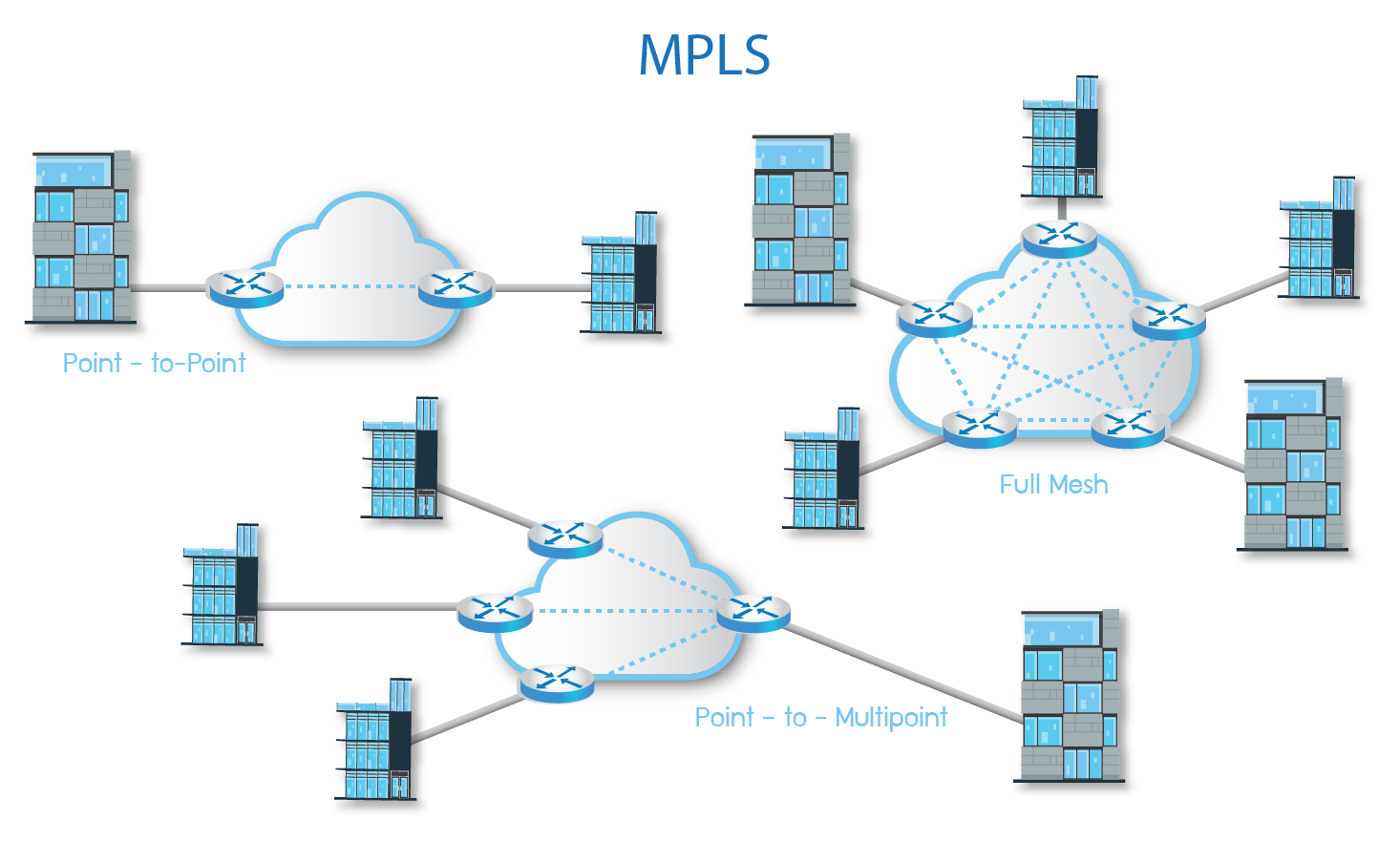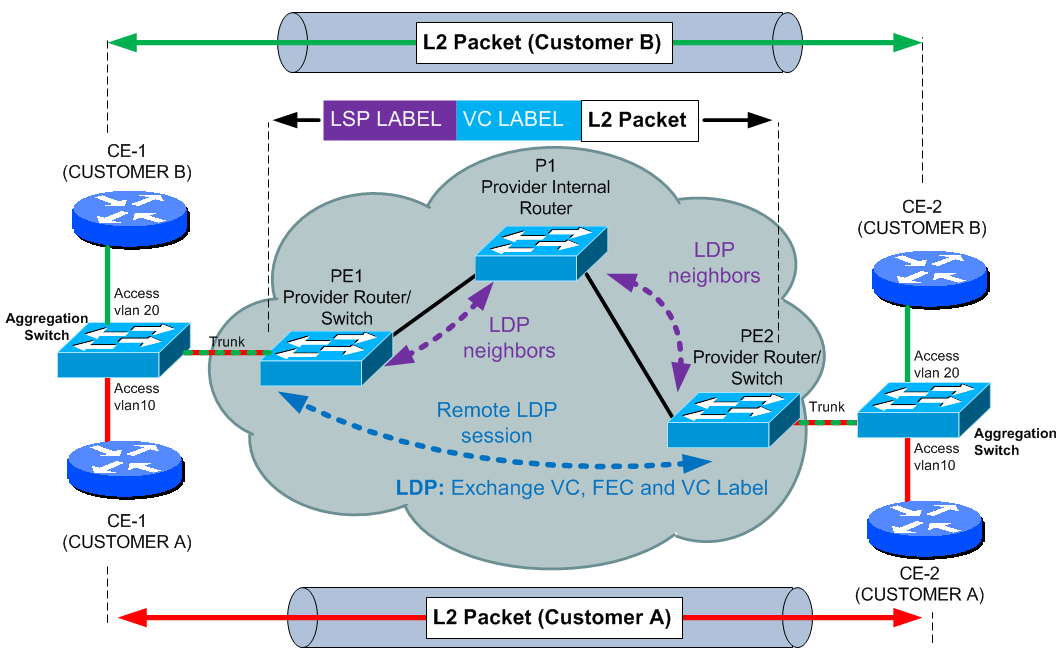Underrated Ideas Of Tips About What Is The Difference Between Point-to-point And MPLS

Point-to-Point vs. MPLS
1. The Lay of the Land
Ever feel like your data is taking the scenic route when it should be zipping directly to its destination? That's where understanding network technologies like point-to-point and MPLS comes in handy. Think of it like this: point-to-point is like a direct, private road between two specific locations, while MPLS is more like a sophisticated highway system designed for efficiency. Both get your data where it needs to go, but they do it in dramatically different ways.
This isn't just tech jargon; it impacts how fast your applications run, how reliably your data is transmitted, and ultimately, how smoothly your business operates. Choosing the right networking solution is like picking the right vehicle for a road trip a sports car might be fun, but not ideal for hauling the whole family and luggage across the country! Similarly, understanding the strengths and weaknesses of each option is crucial for making an informed decision.
So, what exactly is the difference? We'll break it down, avoiding all the overly technical mumbo-jumbo and focusing on real-world implications. Forget those dense networking manuals were going for clarity and practicality here. By the end of this, you'll be able to impress your colleagues (or at least understand what they're talking about) when the topic of networking comes up!
We'll explore the fundamental concepts, consider the specific advantages and disadvantages of each technology, and discuss scenarios where one shines brighter than the other. Let's dive in and shed some light on this somewhat perplexing topic. Prepare for enlightenment! (Okay, maybe just a slightly better understanding of networking, but hey, every little bit helps, right?)

Point-to-Point
2. Simple, Secure, and Straightforward
Imagine you have a direct phone line connecting your office to a branch location. That's essentially what point-to-point is. It creates a dedicated, private connection between two specific points. It's like having your own private internet cable strung between two locations, completely isolated from everyone else's traffic.
The great thing about point-to-point is its simplicity. It's a straightforward, relatively easy-to-understand concept. There's no complex routing, no shared infrastructure, and no getting caught in network congestion. Data travels directly from point A to point B, with minimal overhead. Think of it as a one-lane highway built exclusively for you. No pesky merging traffic!
This simplicity also translates to increased security. Since the connection is dedicated, it's inherently more secure than a shared network. There's less chance of eavesdropping or interception. This makes point-to-point a popular choice for organizations that handle sensitive data, such as financial institutions or healthcare providers. After all, who wants their financial records being rerouted through a dozen different servers?
However, that dedicated connection comes at a price. Point-to-point connections can be more expensive than other options, especially over long distances. You're essentially paying for a dedicated pipe, regardless of how much data you actually send through it. Its like paying for a personal chauffeur to drive you even when you only need to pop down to the corner store.

Pointtopoint Protocol PPP Multiprotocol Level Switching MPLS Ppt
MPLS
3. Efficient, Flexible, and Feature-Rich
Now, let's shift gears and talk about MPLS (Multiprotocol Label Switching). Think of MPLS as a sophisticated highway system with strategically placed signs and toll booths. Instead of blindly routing data packets based on their destination address, MPLS uses short "labels" to guide packets along pre-defined paths.
This label-based routing allows MPLS to optimize network traffic and improve performance. It's like giving each packet a VIP pass that allows it to bypass congestion and take the fastest route. This is particularly useful for applications that require low latency and high bandwidth, such as video conferencing and real-time data transfer. Nobody wants a choppy video call!
MPLS also offers a high degree of flexibility. Network administrators can create different "virtual circuits" with varying levels of priority and bandwidth. This allows them to prioritize critical applications and ensure that they receive the resources they need. It's like having a fast lane for your most important traffic.
However, the complexity of MPLS can also be a drawback. Setting up and managing an MPLS network requires specialized expertise. And because MPLS relies on a shared network infrastructure, there's a greater potential for security vulnerabilities. While MPLS providers implement security measures, it's important to understand the risks involved. So, while it is more efficient, it also comes with a more complex architecture.

Key Differences Summarized
4. A Side-by-Side Comparison
Let's boil it down to the essentials. Point-to-point is simple, secure, and dedicated, but can be expensive and inflexible. MPLS is efficient, flexible, and feature-rich, but more complex and potentially less secure. Its like comparing a reliable, old pickup truck to a high-performance sports car: each has its strengths and weaknesses, depending on what you need it for.
Consider the following table as a quick reference:
Feature Point-to-Point MPLS Complexity Simple Complex Security High Potentially Lower (shared infrastructure) Cost Potentially Higher (dedicated) Potentially Lower (shared) Flexibility Low High Efficiency Lower (no traffic optimization) Higher (traffic optimization) The "best" option depends entirely on your specific needs and requirements. If you need a highly secure, dedicated connection between two specific locations, and cost is not a major concern, point-to-point might be the way to go. On the other hand, if you need a flexible, efficient, and cost-effective solution for connecting multiple locations, MPLS might be a better fit.
Think about your bandwidth requirements, security concerns, and budget constraints. Consult with a qualified networking professional to assess your needs and determine the optimal solution for your organization. Dont just jump on the bandwagon; take the time to understand your unique needs and choose wisely. It's an investment in your business's future!

Making the Right Choice
5. Considering Your Needs
Choosing between point-to-point and MPLS isn't always a black-and-white decision. There are many factors to consider, and the best solution will depend on your specific circumstances. Start by asking yourself some key questions: How critical is security? How much bandwidth do I need? How many locations do I need to connect? What's my budget? Answering these questions will help you narrow down your options.
For example, a small business with only two locations and minimal security concerns might find that a point-to-point connection is the simplest and most cost-effective solution. On the other hand, a large enterprise with multiple locations and stringent security requirements might benefit from the flexibility and advanced features of MPLS. A hospital connecting two campuses to securely share patient information might want the dedicated line, while a business with ten locations might benefit from the flexibility and efficiency of MPLS.
Don't be afraid to explore hybrid solutions. In some cases, it might make sense to use a combination of point-to-point and MPLS. For example, you could use point-to-point for highly sensitive data and MPLS for less critical traffic. This allows you to optimize your network for both security and performance. Think of it as having both a secure vault and an efficient conveyor belt, used for their appropriate purposes.
Ultimately, the decision should be based on a thorough understanding of your business needs and a careful evaluation of the pros and cons of each technology. Don't hesitate to seek expert advice from a qualified networking professional. They can help you assess your needs, design a customized solution, and ensure that your network is optimized for performance, security, and cost-effectiveness. Getting an expert onboard can be the key to a successful deployment!

Mpls Vpn Layer 2
FAQ
6. Your Burning Questions Answered
Still scratching your head? Let's tackle some frequently asked questions about point-to-point and MPLS:
Q: Is point-to-point always more secure than MPLS?A: Not necessarily, but typically yes. Point-to-point's dedicated nature means less exposure to potential vulnerabilities. However, MPLS providers implement security measures, and you can further enhance security with encryption and other protocols.
Q: Can I switch from point-to-point to MPLS (or vice versa) easily?A: It depends on your network configuration and service provider. Switching usually involves some downtime and reconfiguration. Consult with your provider to understand the process and potential impact.
Q: What are the emerging alternatives to point-to-point and MPLS?A: SD-WAN (Software-Defined WAN) is gaining popularity as a more flexible and cost-effective alternative. It allows you to manage your network centrally and dynamically route traffic based on application requirements. Think of it as an even smarter highway system that adapts to changing conditions in real-time. Internet leased lines, especially combined with VPN tech, is also becoming popular.